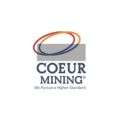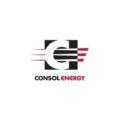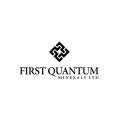
Overview
The mining industry involves the extraction of valuable minerals or other geological materials from the Earth, typically through processes such as drilling, blasting, or excavation. These minerals can include precious metals like gold and silver, base metals like copper and zinc, coal, diamonds, and various industrial minerals and aggregates. The industry encompasses a wide range of activities, from exploration and discovery of mineral deposits to extraction, processing, and transportation of mined materials. Mining operations can vary greatly in scale, from small-scale artisanal mining to large-scale industrial operations involving sophisticated machinery and technology. The mining industry plays a crucial role in supplying raw materials for various industries, including construction, manufacturing, energy production, and technology, making it a fundamental component of the global economy. However, mining also raises environmental and social concerns, such as habitat destruction, pollution, and impacts on local communities, necessitating careful regulation and responsible practices.
Depending on specific features and functions, GAO Tek’s Carbon monoxide gas detectors are sometimes referred to as carbon monoxide detectors, carbon monoxide alarms, carbon monoxide monitors, carbon monoxide sensors, carbon monoxide warning devices, carbon monoxide gas alarms, carbon monoxide analyzers, carbon monoxide safety detectors, and carbon monoxide testers.
Furthermore, GAO Tek’s carbon monoxide gas detectors are further grouped into:
Alarm-enabled, Auto power-off, Data logging, Handheld, High precision, and Outdoor.
GAO Tek’s Carbon monoxide gas detectors have the following applications in the mining industry:
- Early Warning System: GAO Tek’s carbon monoxide gas detectors serve as an early warning system to alert miners to the presence of potentially lethal concentrations of carbon monoxide gas. In underground mines, CO can be produced by diesel-powered equipment, blasting activities, or as a byproduct of combustion processes.
- Preventing Carbon Monoxide Poisoning: Carbon monoxide is colorless, odorless, and tasteless, making it imperceptible to human senses. GAO Tek’s carbon monoxide gas detectors are crucial for detecting even trace amounts of CO, allowing miners to evacuate the area or take necessary precautions to prevent exposure and carbon monoxide poisoning.
- Monitoring Ventilation Systems: GAO Tek’s carbon monoxide gas detectors are often integrated into mine ventilation systems to monitor air quality continuously. They help ensure that ventilation systems are effectively circulating fresh air throughout the mine, minimizing the buildup of harmful gases such as carbon monoxide.
- Diesel Engine Emissions Monitoring: In underground mines where diesel-powered equipment is used, GAO Tek’s carbon monoxide gas detectors are employed to monitor emissions from diesel engines. This helps mine operators ensure that diesel engines are properly maintained and operated to minimize the release of carbon monoxide into the working environment.
- Compliance with Safety Regulations: Many regulatory bodies, such as the Mine Safety and Health Administration (MSHA) in the United States, mandate the use of carbon monoxide detectors in mining operations to comply with safety standards and regulations. Regular monitoring and maintenance of GAO’s carbon monoxide gas detectors are essential for ensuring compliance with these regulations.
- Emergency Response Planning: GAO Tek’s carbon monoxide gas detectors are critical components of emergency response planning in the event of an accident or unexpected release of carbon monoxide in the mine. They enable rapid detection of hazardous conditions, allowing mine rescue teams to respond promptly and effectively to mitigate risks and ensure the safety of miners.
- Remote Monitoring and Control: GAO Tek’s carbon monoxide gas detectors can be equipped with remote monitoring capabilities, allowing mine operators to monitor CO levels and receive real-time alerts remotely. This is particularly useful for large-scale mining operations where underground conditions may be difficult to monitor manually. Remote monitoring enables swift decision-making and intervention in response to elevated CO levels, enhancing overall safety and efficiency.
- Integration with Mine Safety Systems: GAO Tek’s carbon monoxide gas detectors can be integrated into broader mine safety systems, including emergency communication systems and automated ventilation controls. Integration with these systems enables automated responses to elevated CO levels, such as activating additional ventilation or initiating evacuation procedures, further enhancing the safety of miners in the event of an emergency or hazardous condition.
More information on carbon monoxide gas detectors and their applications in other industries can be found on
This category page lists related products
Systems in the Mining Industry Utilizing Carbon Monoxide Gas Detectors
Here are some popular systems in the mining industry using carbon monoxide gas detectors:
Mine Ventilation System Monitoring:
- VentSim: VentSim is a software package designed for simulating and optimizing mine ventilation systems. It can integrate data from carbon monoxide gas detectors to model airflow, gas concentrations, and pollutant dispersion within underground mines. This allows mine operators to optimize ventilation designs, predict CO levels, and ensure adequate airflow to maintain safe working conditions.
- Ventsim Visual Advanced: Ventsim Visual Advanced is an advanced version of VentSim that offers additional features such as 3D visualization of ventilation networks and real-time monitoring of airflow and gas concentrations. It can integrate data from carbon monoxide gas detectors to provide dynamic visualizations of CO levels and facilitate decision-making for ventilation control.
Emergency Response and Evacuation Systems:
- MineSAFE Emergency Evacuation Management System (MEMS): MEMS is a software platform designed for managing emergency response and evacuation procedures in mines. It integrates data from carbon monoxide gas detectors to provide real-time monitoring of gas levels and automate emergency response protocols. MEMS can trigger alarms, initiate evacuation alerts, and provide evacuation route guidance based on the detected CO concentrations.
- MineEvac: MineEvac is another software solution for emergency evacuation management in mines. It utilizes data from carbon monoxide gas detectors to assess the severity of gas-related emergencies and coordinate evacuation efforts. MineEvac can generate evacuation plans, track the location of personnel in real time, and communicate critical safety information to miners via mobile devices or mine communication systems.
Occupational Health and Safety Monitoring System:
- SafeMiner: SafeMiner is a comprehensive occupational health and safety monitoring software tailored for the mining industry. It integrates data from carbon monoxide gas detectors along with other sensors to monitor various environmental parameters, including air quality, temperature, humidity, and noise levels. SafeMiner provides real-time monitoring dashboards, historical data analysis, and customizable alerts to ensure compliance with safety regulations and promote a healthy work environment.
- OH&S Management System (OHMS): OHMS is a software platform specifically designed for managing occupational health and safety (OH&S) in mining operations. It incorporates data from carbon monoxide gas detectors to assess workplace hazards related to air quality and exposure to toxic gases. OHMS facilitates incident reporting, risk assessments, and employee training programs to mitigate the risks associated with CO exposure and ensure the well-being of miners.
Mine Equipment Maintenance and Monitoring System:
- MineCare Maintenance Management System: MineCare is a maintenance management software solution tailored for the mining industry. It integrates data from carbon monoxide gas detectors installed on mining equipment to monitor engine performance, emissions, and maintenance needs. By analyzing CO levels and engine diagnostics, MineCare helps optimize equipment maintenance schedules, identify potential issues early, and prevent unplanned downtime due to equipment failures.
- Fleet Management System (FMS): FMS is a software platform designed for managing and monitoring mining fleet operations. It incorporates data from carbon monoxide gas detectors installed on vehicles and equipment to track fuel usage, engine performance, and emissions. FMS provides insights into CO emissions from diesel-powered machinery, enabling mine operators to optimize fleet efficiency, reduce fuel consumption, and comply with environmental regulations.
Integrated Safety Management System:
- iSafe: iSafe is an integrated safety management software platform designed to streamline safety processes and procedures in mining operations. It integrates data from carbon monoxide gas detectors, along with other safety devices and sensors, to provide a holistic view of safety risks and compliance status. iSafe facilitates incident reporting, safety inspections, corrective actions tracking, and regulatory compliance management to ensure a safe working environment for miners and contractors.
- Safety Management System (SMS): SMS is a safety management software solution tailored for the mining industry. It centralizes data from carbon monoxide gas detectors and other safety systems to streamline safety planning, monitoring, and reporting processes. SMS enables proactive risk management, safety training tracking, and performance analytics to continuously improve safety outcomes and prevent accidents related to CO exposure and other hazards in mining operations.
GAO Tek’s targeted markets are North America, particularly the U.S. and Canada.
Complying with Government Regulations
GAO Tek’s carbon monoxide gas detectors comply or help our customers comply with U.S. government regulations such as:
- Occupational Safety and Health Administration (OSHA) Regulations
- Environmental Protection Agency (EPA) Regulations
- National Institute for Occupational Safety and Health (NIOSH) Regulations
- Department of Transportation (DOT) Regulations
- National Fire Protection Association (NFPA) Regulations
- Water sprays and water seals; test requirements
- Water, sediment, and air quality; sampling requirements
- Sampling and analysis; additional requirements
- Training programs; minimum requirements
- Design and performance requirements
GAO Tek’s carbon monoxide gas detectors comply or help our clients comply with Canadian regulations such as:
- Canadian Environmental Protection Act (CEPA) Regulations
- Workplace Hazardous Materials Information System (WHMIS) Regulations
- Canadian Occupational Health and Safety (OHS) Regulations
- Transportation of Dangerous Goods (TDG) Regulations
- National Energy Board (NEB) Regulations
- Canadian Nuclear Safety Commission (CNSC) Regulations
- Canadian Food Inspection Agency (CFIA) Regulations
- Health Canada Regulations
- Natural Resources Canada (NRCan) Regulations
- Environment and Climate Change Canada (ECCC) Regulations
Case Studies of Carbon Monoxide Gas Detectors in the Mining Industry
Carbon monoxide gas detectors are sometimes called carbon monoxide detectors, carbon monoxide alarms, carbon monoxide monitors, carbon monoxide sensors, carbon monoxide warning devices, carbon monoxide gas alarms, carbon monoxide analyzers, carbon monoxide safety detectors, and carbon monoxide testers.
Here are some practical examples of using carbon monoxide gas detectors in the mining industry:
A large coal mine located in Wyoming’s Powder River Basin implemented a comprehensive atmospheric monitoring system, including carbon monoxide gas detectors, to enhance safety for underground miners. The detectors were strategically placed throughout the mine to continuously monitor CO levels, especially in areas prone to equipment emissions or where diesel-powered machinery operated. This system helped to identify potential carbon monoxide hazards promptly, allowing for timely interventions and ensuring miners’ safety.
A copper mine in the Upper Peninsula of Michigan integrated carbon monoxide gas detectors into their ventilation system to monitor air quality in underground work areas. The detectors were linked to the mine’s central monitoring station, where real-time data on CO levels were continuously monitored by safety personnel. During a routine inspection, an unexpected increase in CO levels was detected in a remote section of the mine, prompting an immediate evacuation of workers from that area and preventing potential exposure to harmful gases.
A gold mine located in the Appalachian Mountains of Virginia installed carbon monoxide gas detectors in key areas of the underground mine workings. The detectors were part of a broader safety initiative aimed at improving air quality monitoring and reducing the risk of hazardous gas exposure for miners. During a routine maintenance check, one of the detectors detected elevated levels of carbon monoxide near a diesel-powered equipment storage area. The prompt detection allowed the mine operators to investigate and address the issue before it posed a significant safety threat to the miners.
A limestone quarry in central Florida implemented a carbon monoxide monitoring system to ensure the safety of workers operating heavy machinery in confined spaces. The detectors were installed in equipment cabs and at various points along haulage routes to detect exhaust emissions from diesel-powered trucks and loaders. In one instance, a malfunction in a loader’s engine caused a sudden increase in carbon monoxide levels within the operator’s cab. The detector promptly alerted the operator, who could shut down the equipment and evacuate safely, preventing potential CO exposure.
A coal mine in Illinois implemented a comprehensive atmospheric monitoring system, including carbon monoxide gas detectors, to ensure the safety of miners working underground. The detectors were strategically placed in key areas of the mine, such as haulage ways and equipment operating zones. During routine operations, the detectors detected elevated levels of carbon monoxide originating from diesel-powered equipment. The early warning provided by the detectors enabled prompt intervention, including adjustments to ventilation systems and temporary evacuation of affected areas, preventing potential exposure-related incidents.
A metal ore mine in Pennsylvania installed state-of-the-art carbon monoxide gas detectors as part of its safety enhancement program. These detectors were integrated into the mine’s ventilation and emergency response systems, allowing for real-time monitoring of atmospheric conditions. In one instance, the detectors detected a sudden increase in carbon monoxide levels due to a malfunction in a diesel-powered vehicle. The detectors triggered an automatic shutdown of the vehicle and alerted mine personnel, who swiftly evacuated the affected area and rectified the issue, preventing any harm to miners.
A limestone quarry in Florida implemented a comprehensive atmospheric monitoring plan, which included the deployment of carbon monoxide gas detectors. The detectors were utilized to monitor air quality in areas where heavy machinery and diesel-powered equipment operated. On one occasion, the detectors identified elevated levels of carbon monoxide near a malfunctioning diesel generator. This prompt detection allowed the maintenance team to quickly address the issue, preventing potential exposure risks to miners and ensuring uninterrupted operations.
A copper mine in Arizona employed carbon monoxide gas detectors to monitor air quality in underground work areas. The detectors were equipped with real-time data transmission capabilities, allowing for remote monitoring by safety personnel on the surface. During routine operations, the detectors detected a buildup of carbon monoxide caused by inadequate ventilation in a remote section of the mine. The timely alert from the detectors enabled the rapid deployment of additional ventilation equipment and evacuation measures, averting a potential safety incident and ensuring the well-being of miners.
A gold mine in Ontario implemented carbon monoxide gas detectors as part of its safety measures in underground operations. The detectors were strategically placed in areas where diesel-powered equipment was used, such as haulage ways and drilling sites. During routine operations, the detectors detected an increase in carbon monoxide levels due to a malfunction in a diesel engine. The detectors promptly alerted mine personnel, who evacuated the affected area and shut down the equipment. This swift response prevented potential exposure-related incidents and ensured the safety of miners.
A nickel mine in Quebec integrated carbon monoxide gas detectors into its ventilation and atmospheric monitoring systems to safeguard miners working underground. The detectors were connected to a central monitoring station, allowing for real-time monitoring of air quality. On one occasion, the detectors detected a sudden increase in carbon monoxide levels caused by a malfunctioning diesel-powered vehicle. The detectors triggered an automatic shutdown of the vehicle and alerted mine personnel, who evacuated the affected area promptly. This proactive approach prevented any harm to miners and minimized production downtime.
GAO RFID Inc. RFID Hardware, a sister company of GAO Tek Inc., is ranked as the top 10 RFID suppliers in the world. Its RFID, BLE, and IoT products have also been widely used in the mining industry. Articles about related industries are given below:
Oil and Gas Extraction Industry
USE of Carbon Monoxide Gas Detectors with Leading Software and Cloud Services in the Mining Industry
GAO Tek has used or has facilitated its customers to use GAO’s carbon monoxide gas detectors with some of the leading software and cloud services in their applications. Examples of such leading software and cloud services include:
- MineSafe Gas Detection System
- StrataConnect Wireless Gas Detection System
- MineARC EnviroCair Real-Time Gas Monitoring System
- Trolex TX6355 Sentro 1 Gas Detection System
- Industrial Scientific Ventis MX4 Gas Detector
- Honeywell BW Ultra-Portable Five-Gas Detector
- RAE Systems AreaRAE Plus Wireless Gas Monitor
- MSA ALTAIR 4X Multigas Detector
- Dräger X-am 2500 Portable Gas Detector
- RKI Instruments GX-2009 Four-Gas Personal Monitor
- Industrial Scientific MX6 iBrid Multigas Monitor
- Blackline Safety G7 Connected Safety Solution
- New Cosmos Electric GD-K71D Fixed Gas Detector
- Sensidyne/Gilian GilAir Plus Personal Air Sampling Pump
- RKI Instruments Eagle 2 Portable Gas Detector
- Honeywell Analytics Vertex Multi-Point Gas Monitoring System
- MSA V-Gard GREEN Hard Hat with Built-In Gas Monitor
- Gas Clip Technologies MGC-S Simple Portable Gas Detector
- Sierra Monitor 5100-XX-IT Gas Detector Controller
- RAE Systems ToxiRAE Pro Personal Gas Monitor
GAO Tek’s carbon monoxide gas detectors and their applications in other industries are listed on
Other related products can be found in the
Meeting Customers’ Demands
Large Choice of Products
To satisfy the diversified needs of their corporate customers, GAO Tek Inc. and its sister company GAO RFID Inc. together offer a wide choice of testing and measurement devices, network products, RFID, BLE, IoT, and drones.
Fast Delivery
To shorten the delivery to our customers, GAO has maintained a large stock of its products and can ship overnight within the continental U.S. and Canada from the nearest warehouse.
Local to Our Customers
We are located in both the U.S. and Canada. We travel to customers’ premises if necessary. Hence, we provide very strong local support to our customers in North America, particularly the U.S. and Canada.
Furthermore, we have built partnerships with some integrators, consulting firms, and other service providers in different cities to further strengthen our services. Here are some of the service providers in the mining industry we have worked with to serve our joint customers:
- ABB
- Accenture
- Bain & Company
- Boston Consulting Group (BCG)
- Capgemini
- Caterpillar
- CGI Group Inc.
- Cisco Systems
- Cognizant Technology Solutions
- Deloitte
- Emerson
- Ernst & Young (EY)
- GE Digital
- Honeywell Process Solutions
- IBM Global Business Services
- Infosys Limited
- Komatsu
- KPMG
- McKinsey & Company
- PricewaterhouseCoopers (PwC)
- Rockwell Automation
- Schneider Electric
- Siemens
- Tata Consultancy Services (TCS)
GAO has Many Customers in the Mining Industry
The products from both GAO Tek Inc. and GAO RFID Inc. have been widely used in the mining industry by many customers, including some leading companies. Here is more information on applications of GAO RFID Inc.’s products in the mining industry. Articles about related industries are given below:
Oil and Gas Extraction Industry
Here are some of GAO’s customers in the mining industry:
- Alliance Resource Partners, L.P.
- Alpha Natural Resources
- Arch Resources, Inc.
- Cleveland-Cliffs Inc.
- Cloud Peak Energy Inc.
- Coeur Mining, Inc.
- Consol Energy Inc.
- Corsa Coal Corporation
- Foresight Energy LP
- Murray Energy Corporation
- Peabody Energy Corporation
- Warrior Met Coal, Inc.
- Barrick Gold Corporation
- Teck Resources Limited
- Nutrien Ltd.
- Agnico Eagle Mines Limited
- First Quantum Minerals Ltd.
- Kinross Gold Corporation


















Contact Us
Here are GAO Tek’s Carbon monoxide gas detectors and they are further organized by feature:
Alarm-enabled, Auto power-off, Data logging, Handheld, High precision, and Outdoor.
If you have any questions about our products or want to place an order, our technical experts can help you.
Please Fill out this form or Email us.
